The Incredible Life and Works of Judith Scott
Who was fiber sculptor Judith Scott?
Judith Scott was an American fiber sculptor known for her unique and captivating artwork. She was born on May 1, 1943, in Columbus, Ohio. Judith Scott was born with Down syndrome and experienced deafness, which made her early life challenging. At the age of seven, she was placed in an institution for individuals with intellectual disabilities.
Despite her disabilities, Judith found her way to express herself through art. In 1987, when she was 44 years old, her twin sister, Joyce Scott, who is a well-known artist herself, discovered Judith in the institution and decided to bring her home. Joyce introduced Judith to the Creative Growth Art Center in Oakland, California, a center that provides artistic support and resources for people with disabilities.

Fiber Sculptor Judith Scott
At the Creative Growth Art Center, Judith Scott was introduced to various art materials and techniques, and she found her passion in fiber art. She began creating intricate sculptures by wrapping and weaving found objects with yarn, thread, and other fibers. Her work often incorporated an astonishing array of colors, textures, and shapes.
Judith’s artistic career quickly gained recognition, and her sculptures were exhibited in galleries and museums around the world. Her work is celebrated for its profound emotional depth, complexity, and symbolism. Many art critics and enthusiasts praise Judith Scott’s art for challenging the conventional boundaries of artistic expression.
Tragically, Judith Scott passed away on March 15, 2005, but her legacy continues to live on through her powerful and inspiring artwork. Her story serves as a testament to the transformative power of art and how it can provide a means of communication and self-expression for individuals facing significant challenges.
Judith Scott: The Tumultuous History
Judith Scott was born in May of 1943 in Cincinnati, Ohio. Growing up, Judith was very close with her fraternal twin sister, Joyce. Joyce described their relationship as inseparable. They played together for hours on end, slept in the same bed, and did everything else together. However, unlike Joyce, Judith had been born with Down Syndrome. Furthermore, Judith had been diagnosed with Scarlet Fever as a baby. This had caused her to lose her hearing, but no one realized she had become deaf until many years later.
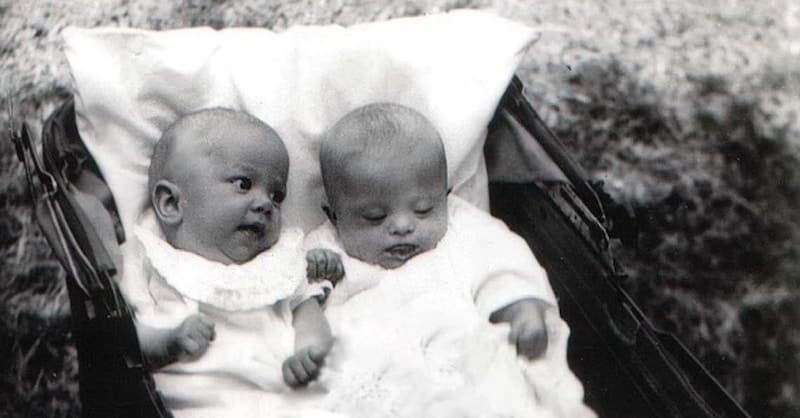
Judith Scott and her twin Joyce as infants.
When it came time to start school, Joyce entered without a problem, but Judith was refused acceptance into the only class the school had for children with disabilities. The teachers cited her inability to answer their questions with no more than babble. However, this was due to her still undiagnosed lack of hearing. Meetings with countless doctors and psychologists led her parents to the decision to send Judith to the Columbus State Institution when she was 7 and a half years old. Being ripped away from each other had a profound effect on both of the twins. Judith specifically was said to withdraw after this, becoming alienated from most other people.
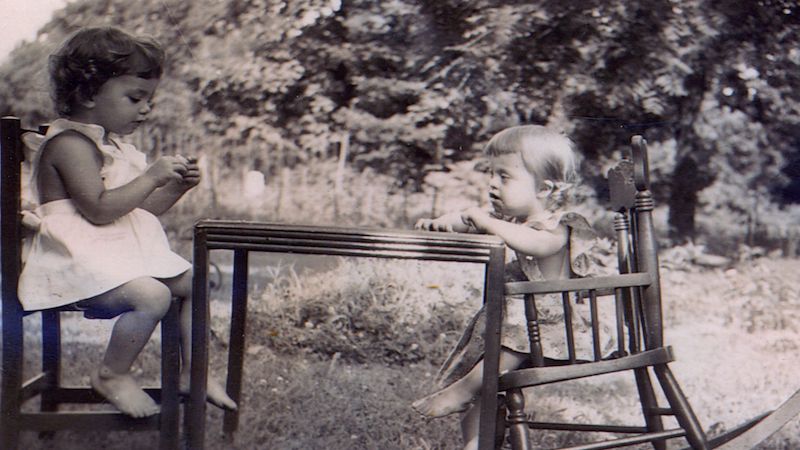
Joyce and Judith Scott playing together as children.
At the institution, Judith’s IQ was tested still without the knowledge that she was deaf. As such, her biased IQ test returned a score of 30, which meant that the school would not allow her any training opportunities. Between the pain of being torn from her twin and the treatment she received with still no one realizing she was deaf, behavioral problems began to surface. Judith was moved to a smaller institution in Ohio and became a ward of the state.
Joyce, against her parent’s wishes, sought out Judith eventually. She visited her in these institutions for years and eventually, in 1985, became Judith’s legal guardian. Judith moved to California and spent the rest of her life with Joyce and her family.

Joyce and Judith Scott (inset is a photo of Judith’s later work “Twins”).
Fiber Art of Judith Scott
Joyce had once reported that, while visiting Judith in the institution, that she had tried to encourage her to draw with the other patients. However, she was promptly told that Judith was “too r**arded to draw” and had her crayons taken away.
But once she moved in with Joyce in California, she was enrolled in the Creative Growth Art Centre in Oakland. This place, described by Joyce as “joyful,” is a center specifically for people with mental or physical disabilities to express themselves with total artistic freedom. During her first years at the center, Judith did not seem to enjoy it, and wouldn’t paint, sculpt, or sew. But when she finally took a fiber arts class with textile artist Sylvia Seventy, Judith’s hidden talent showed through. For what seemed like the first time in her life, Judith was happy. She began wrapping objects in thread and fabric, creating constantly.
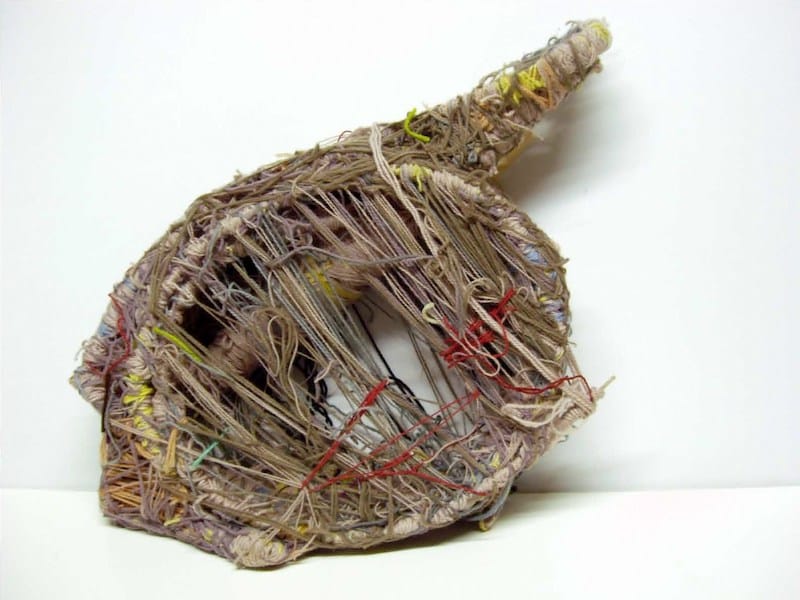
“Untitled” by Judith Scott, 1993.
Her work was playful and didn’t follow any rules, making it spectacular and unique. She would wrap any textile (yarn, thread, fabrics) around any object (magazines, chairs, a bicycle wheel). Perhaps the most beautiful part of this story is that the director of Creative Growth at the centre described this art epiphany as Judith “learning to speak”. She had been verbally held back for so much of her life, and art was her way to communicate and express herself. In a stark contrast to the institutions of her past, Judith was given free reign in the art studio and her endeavors were encouraged by all of the staff. As she grew in technical skill, she became more specific about which materials and which colors she would use, and would spend anywhere from days to months on a piece. She began to experiment and become more out of the box with her art. Over 18 years of creating, she produced over 200 pieces.
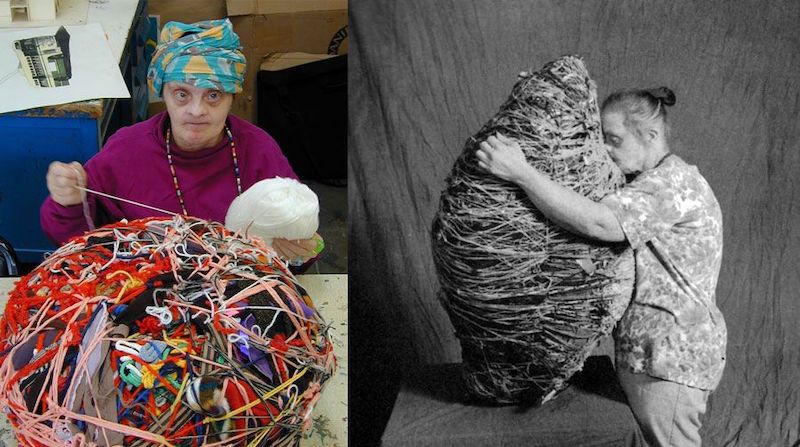
Judith Scott with two of her works.
Judith’s work reflects her innermost feelings that she couldn’t communicate to anyone for so long. In 1999, the book Metamorphosis: The Art of Judith Scott by John MacGregor was published, making her story available to a much wider audience. Her work still resides in permanent collections all over the world, including the Museum of Modern Art in New York City.
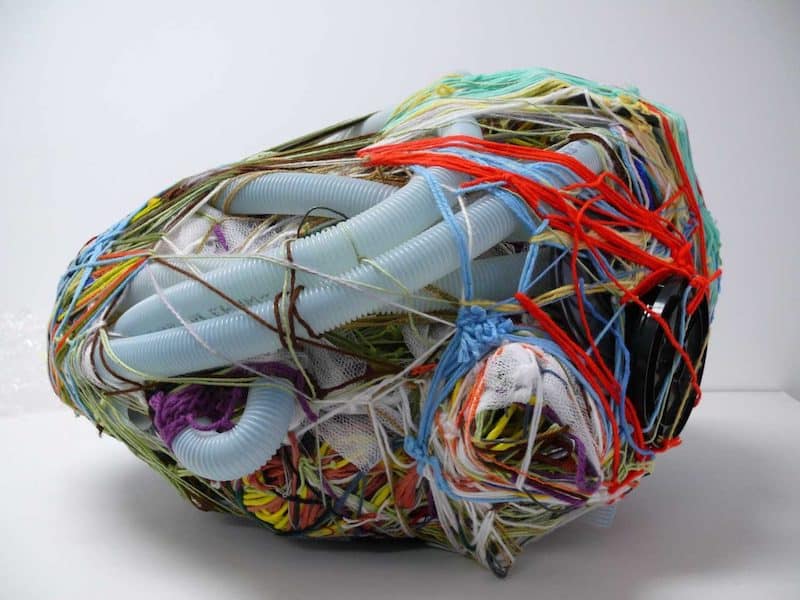
“Entwined” by Judith Scott.
Judith Scott passed away in 2005 of natural causes. She was with her twin sister Joyce at their home in California. Judith passed as an internationally renowned artist, known for her art rather than for her disability that she had fought for so long. She had outlived her life expectancy by nearly 50 years.
This art blog about fiber artist Judith Scott was published by Nazmiyal Antique Rugs.



